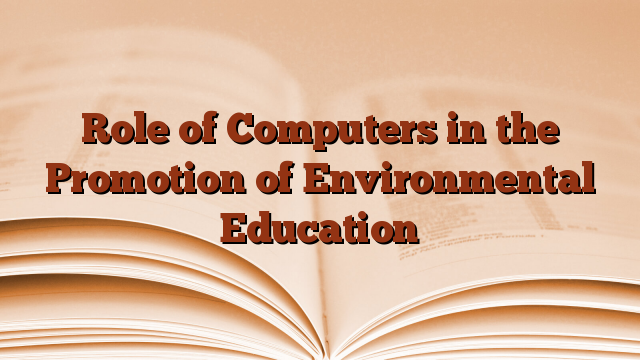Computers have sparked a revolution in education, but the tremendous changes seen in the last decade may be surpassed in the next as these computers are connected in a global educational network.
Teachers and high school students take water samples from Lake Baikal in Siberia, while at other lakes around the world other teachers and students take similar samples from local lakes and subject them to the same simple water quality tests. Through their school computers, they share their findings and their observations that water pollution problems are the same around the world. They are part of a ‘global laboratory’ project involving scientists specializing in water pollution.
A similar computer network connects citizen activists, who have joined with students, teachers and scientists in “sister watershed” groups around the world.
Hobby birders and biologists pool their rare bird sightings on a North American computer network connected to ornithologists in Central and South America.
In global computer networks, the distinctions between classroom and community education are blurring. Volunteer organizations, government agencies, students and teachers are all involved in what for many has become a virtual classroom with no walls and increasingly no borders.
Already in pilot projects, high school students are sharing the methods and results of field studies on environmental quality by using computer telecommunications to transcend national borders. In the same way, elementary school children share their life experiences and visions of the future. Their messages to one another, passed at tremendous speed and shared simultaneously in many classrooms, offer powerful, personal lessons in science, geography, and human relationships.
Curriculum development for environmental education, which for the past two decades has been pursued independently and often in isolation by teachers, school districts and universities, is now linked in a global forum that can respond immediately to the increasingly complex and pressing environmental issues facing the world world is faced. Teachers around the world connect with their peers to discuss how they can do their jobs better. The coordination of international educational projects is less burdened by time and travel budgets as computer networks provide forums for collaboration.
The technology for this exchange takes advantage of the personal computer’s ability to communicate over standard telephone lines using a modem. The simplest networks connect personal computers in a “store-and-forward” system that repeats messages from one to the next until everyone has copies. These least expensive networks are connected to larger, faster computers that act as central information storage banks and relay stations. They, in turn, exchange information with each other and tap into the power and data in computer systems at large research and educational institutions.
In many ways, this vast new sea of information presents its own challenges, often akin to “drinking water out of a fire hose.” The sheer volume of facts and opinions is impossible to grasp and has compelled those who wished to taste their power to find new ways to organize and grasp the flow of information.
E-mail services and computer “conferences” allow students and teachers to communicate privately or publicly as members of large discussion groups. Computer conferences are organized similarly to conferences where people meet face to face, except that the meeting rooms are in each participant’s computer. Computer conferences cross time zones as participants review and comment on each other’s written contributions as time and interest permit. Anyone can read and reflect on questions or statements raised in a conference, and everyone has an equal opportunity to respond.
Computer networks make classroom walls disappear. Real environmental problems flow directly into the classroom via computer networks, and students join forces with scientists, civic activists, journalists, government officials and community leaders of all stripes to seek understanding and solutions. While access to computer networks is still a long way off for most people on the planet, it is becoming increasingly available to the gatekeepers and opinion leaders who help shape a common understanding of the global situation. The increasing abundance of diverse information sources available over computer networks, when viewed as a well-stocked marketplace, can also stimulate demand for more and better goods by the world’s information consumers.
For example, citizen participation in the 1992 United Nations Conference on Environment and Development (UNCED) was coordinated via computer networks on seven continents, giving NGOs access to the full text of Preparatory Committee documents and providing public forums for news and discussion of issues . This availability of information has a dramatic impact on how an event like UNCED permeates mainstream media everywhere.
Under the often chaotic perspective of the mass media, structures are evolving to channel the new flows of information, to enable this and future generations to deal with the problems it describes. A variety of computer networking efforts for environmental education offer some great models. At heart, these efforts are all based on the same notion: that environmental issues must be viewed from a global perspective, but addressed by individuals acting locally, in their own communities or at home.
All of this new technology does not come for free, and developed countries are clearly at the forefront in providing computer access for education. But even in the United States, where computer telecommunications is becoming commonplace, profit rather than education reform determines who gets access.
The harsh reality has motivated computer networks of citizens to unite in the international Association for Progressive Communications (APC) to make computer network access universally available. The APC hosts several promising educational efforts in its partner computer networks, which now span more than 90 countries around the world. These services are available to anyone with a PC and a modem, often over a local call, at a cost roughly equivalent to a newspaper subscription or a monthly phone bill.
The educational projects offered on the APC networks are examples of how low-cost computer communications can fit into community programs and classrooms.
Thanks to Mathew Simond | #Role #Computers #Promotion #Environmental #Education

Leave a Reply